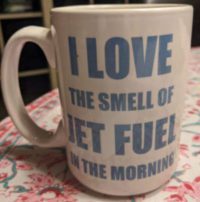
MAX family 1 of 1 scaled
[UPDATE – We understand the two images aren’t showing. Working on a fix ASAP]
Airlines work their aircraft hard; they’re not making money if they’re not flying. The latest single-aisle generation has state-of-the-art engines that burn much less fuel and enable longer ranges. Lower fuel burn is a priority; for some airlines, that extra range is a handy feature to exploit.
Using the latest data from Skaialrk (3Q24), we assembled two charts that use the Boeing MAX 8 and MAX 9 as examples.
The ball size represents the number of flights for 3Y24. We limited the chart to the airlines flying the most flights; otherwise, it would become too busy. The Y-axis reflects fuel burn, and the X-axis is the average range. Ideally, an airline wants the most range and the lowest fuel burn. The best quadrant to be in is the bottom right, and the worst quadrant to be in is the top left.
MAX 8 data

Small Icelandair is the airline squeezing the most out of its MAX 8s. The aircraft is proving to be very useful; its capacity is easy to sell, and its range allows it to reach deep into secondary markets, avoiding big competitor fortress hubs. This is especially the case in the US. Note that several other larger airlines are also pushing their MAX 8s hard.
Interestingly, the two largest MAX 8 operators, Southwest and Ryanair, average about the same stage length (850 miles). That does not mean they are underutilizing their aircraft. This means that they are not yet exploiting the range potential. They may have specific markets where the aircraft fly further, e.g., Hawaii for Southwest. But, on average, the fleets are doing ~850 miles.
MAX 9 data

The MAX 9 fleet is smaller than the MAX 8 fleet, and again, certain operators are pushing the aircraft. While Icelandair is again out to the right, COPA averages longer stages. Interestingly, Alaska Airlines is also exploiting the MAX 9 effectively. Alaska sold its A321neo fleet to American Airlines to standardize on the 737. It looks like a good decision as the MAX 9 has the lowest seat-mile costs among US carriers, and Alaska does not need the A321neo’s extended range.
Conclusion
The data suggest the 737 MAX models offer lower fuel burn and useful extra range over previous generation models. Operators can exploit the combination of these two critical features as needed. For some operators, the low fuel burn drives their shorter hauls, while others exploit the reach and benefit from the low burn.
Views: 34




